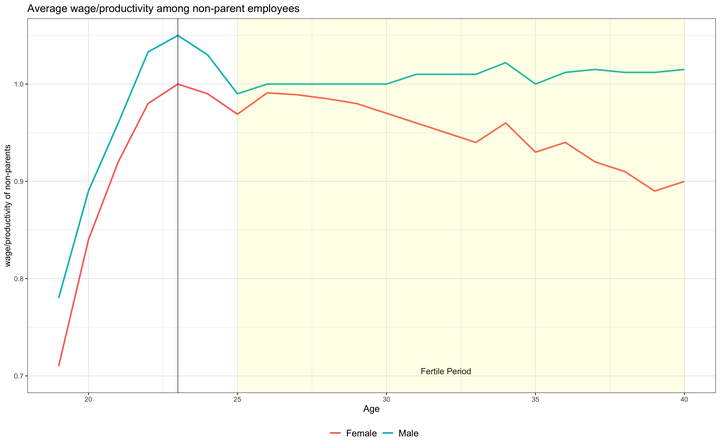Expected Fertility Penalty

Abstract
Women are still underpaid and under-represented in the labor market, even if they are as educated and as experienced as their male peers. Evidence shows that fertility plays an important role in the career development of women, as they incur serious penalties on earnings following the birth of the first child. This paper suggests a new channel for the gender pay gap - an expected fertility penalty for young women in prime-childbearing ages. I employ event studies around the birth of the first child to evaluate the residual wage gap. My results show that the residual gap widens through the life cycle of women, and fertility changes how women are perceived in the labor market. Later, I employ a quasi-experimental approach to analyze the effects of coworkers giving birth on non-mother females. I find that non-mother women in prime-childbearing ages are perceived as less productive from the employer’s perspective after a coworker giving birth in the previous period. In other words, there’s not just a penalty for child-bearing, but for the expectation of fertility as well. Furthermore, salience matters - in small firms, the expected fertility penalty is larger the bigger the productivity loss (number of employees giving birth) experienced in the workplace.